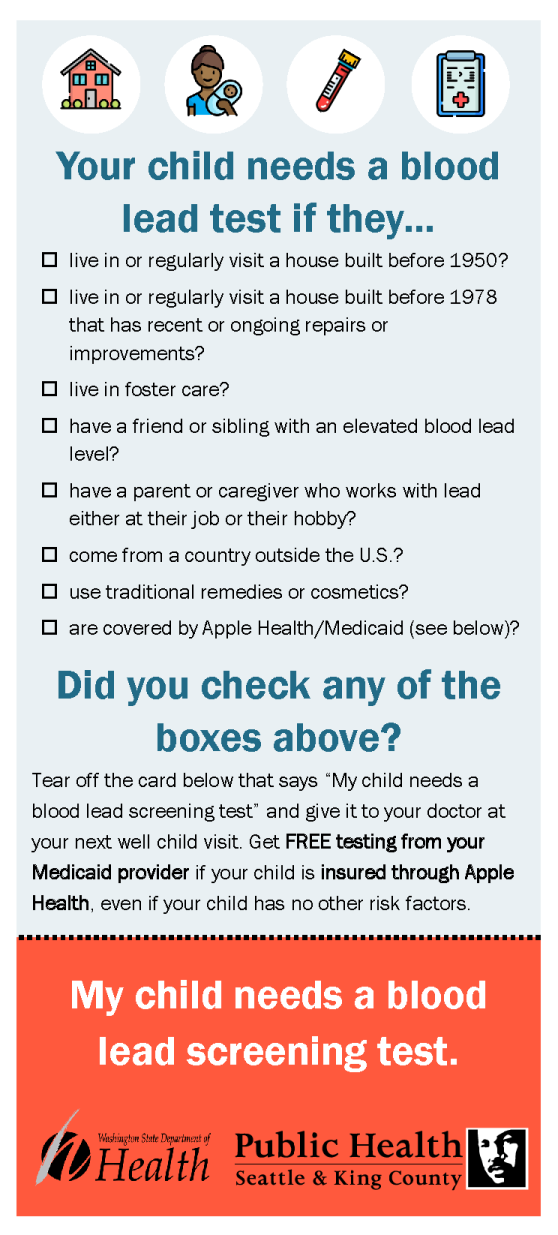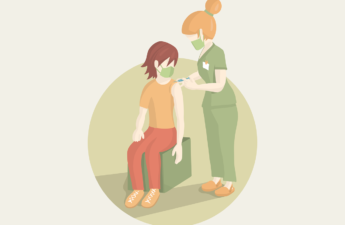Why lead is a public health issue and what we’re doing about it
By Shirlee Tan, PhD, Toxicologist
Public Health – Seattle & King County
If you’ve picked up a newspaper or watched television in the last few years, you’ve probably seen stories about lead poisoning locally and nationally. What’s the deal with lead and why is it a public health issue?
Let’s start at the beginning.
What is lead and where is it found?
Lead is a heavy metal that is naturally present in the earth. Throughout history it has been widely used in products, and this led to widespread distribution into the environment.
For instance, gasoline in the US was leaded to reduce engine knocking, boost octane ratings, and help with wear and tear on valve seats within the motor until it was banned in the late 1970s and fully phased out by 1995. Lead emissions from our cars and into our air was common, and lead levels in the soil near roadways still remain elevated.
Lead was also used in paint until it was banned in 1978, and this is the greatest exposure to the general public that we know of. As paint ages, it can chip and break down to become dust, which can poison kids that ingest paint chips or crawl through lead dust that is then inhaled or ingested. As many of us know, kids love putting things in their mouths!
Lead can also get into drinking water when it corrodes from older pipes, from fixtures, or solder. In 1986, the Safe Drinking Water Act reduced the amount of lead allowable in pipes, pipe fittings, plumbing fittings, fixtures and solder, to prevent exposures through drinking water. This year, the Washington State Department of Health made funding available for all elementary schools in the state to test their water. Testing was voluntary. You can find out more about this testing and see if your school participated in this free testing here.
What does lead do to our bodies?
Lead poisoning does not always have obvious immediate symptoms. It can affect the kidneys and other organs, hearing and speech development, and it can cause an upset stomach. It is most known for its effects on the nervous system, altering neuronal growth and causing permanent damage.
During the first two years of life, when development is critical, lead exposure can affect the brain and result in learning and attention disorders and aggression, as well as behavioral and social/emotional problems. It can also lower IQ and alter a child’s future workforce potential.
Is lead a problem here in King County?
Data on lead poisoning in Washington state and in King County are limited. In fact, we are only testing about 4.4% of King County kids, well behind other states. We estimate that we are likely missing up to 97% of kids that have lead poisoning due to our low testing rates. And, because our testing rates are so low, we are not sure how bad the problem is in King County.
We do know that 56% of the housing stock in King County is older than 1980. This suggests we have a pretty big risk of lead paint exposure (based on deteriorating paint or renovations) in more than half of King County homes and other spaces, like home-based day cares.
But, there is good news.
We just entered the second year of a CDC-funded grant to promote lead poisoning prevention in children. As part of this work, we have been engaging communities to increase their understanding of lead and working alongside them to develop solutions that will protect families, change policies, and engage medical providers. (Come back to Public Health Insider for more info on this!)
The medical community is also actively working on this issue. This year, the King County Medical Society (KCMS) partnered with us and the Washington State Department of Health to draft a resolution on lead. This resolution was endorsed by the Northwest Pediatric Environmental Health Specialty Unit, Washington State Department of Health, Public Health – Seattle & King County, Washington Poison Center, and the Washington Chapter of the American Academy of Pediatrics. It passed the KCMS board in August, and just last week the resolution was put before the Washington State Medical Association (WSMA) and passed unanimously! There is currently a lot of momentum and excitement among the medical community on this front, and we are working closely with medical providers and KCMS to collaborate and improve our work on lead.
What you can do? Get your kids tested.
One of the most important things you can do is to have your children tested for lead. CDC recommends that children get tested at 12 and 24 months during their well visits. In fact, it is a federal requirement that all Medicaid-enrolled children be tested at during these visits.
To help parents work with their physicians and ask for a blood lead test for their children, we worked with WADOH and developed provider cards. If you answer “yes” or “I don’t know” to any of the questions, then you should request a blood test from your medical provider using the detachable card at the bottom of the page. These cards are available in Spanish, Vietnamese, and English, and will soon be available in Somali, Arabic, and Khmer.
Testing is covered by Apple Health at 12 and 24 months, or if your child has not been tested, before the age of 6. Your doctor (with our help) will be key in developing a treatment plan and understanding the source of exposure if your child’s blood lead tests above 5 µg/dL.
Reduce exposure to lead in your home, at work, and where you and your kids play:
- Take your shoes off when you enter the house – leave the dirt outside
- Damp dust and mop once a week
- Wash hands before eating, drinking, and sleeping
- Wipe down toys
- Bring in clean garden soil and establish raised beds when gardening
- Check to see if you live in the Tacoma Smelter Plume, and have your soil tested for high lead and arsenic
- When possible, choose outdoor play areas that have fresh ground cover (bark or grass) and are free of paint chips
- If you are renovating your home and it is older than 1980, be sure to hire a contractor trained in lead safe work practices (for more information see the Environmental Protection Agency’s recommended lead-safe work practices) to avoid contaminating your home with lead dust



